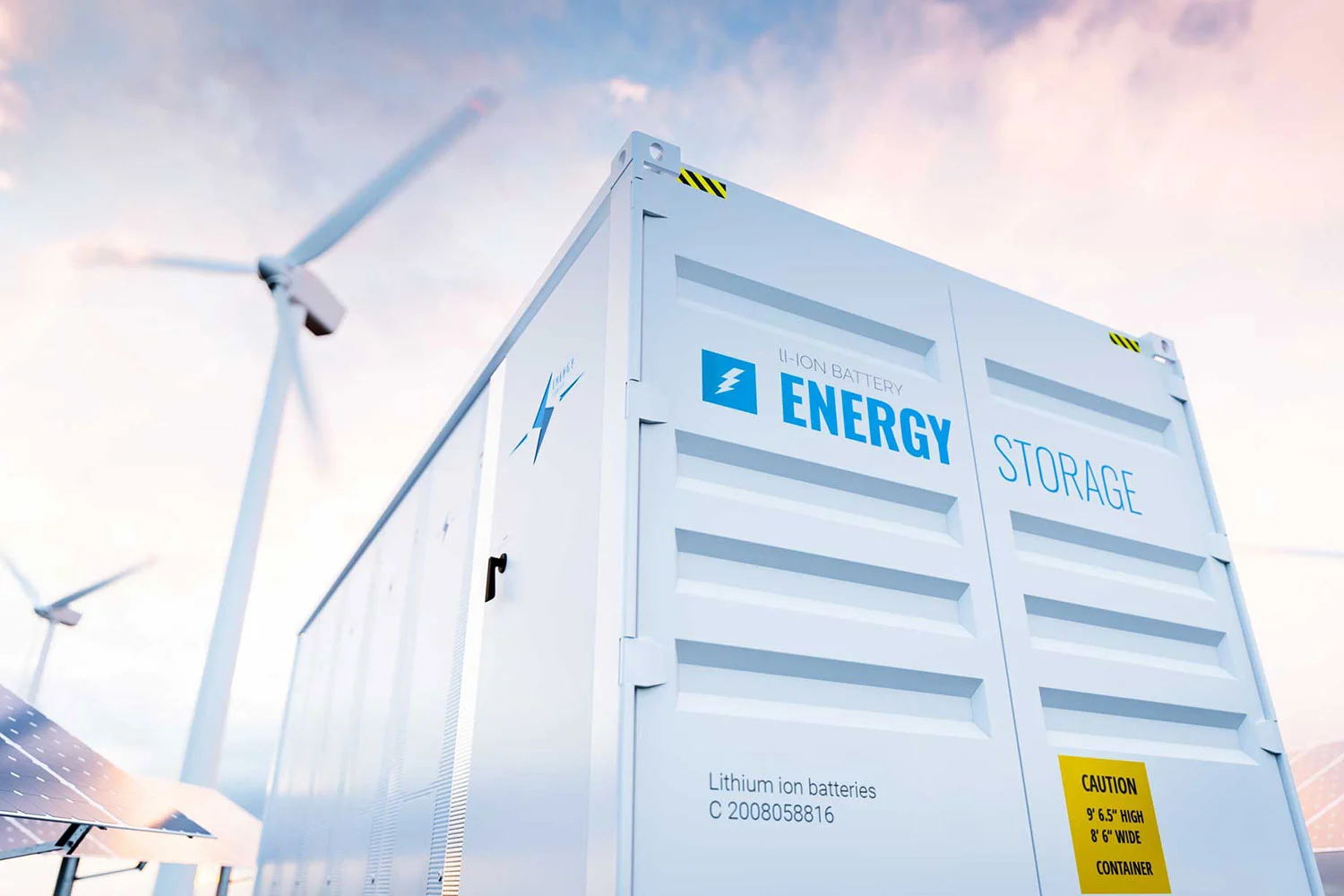
Introduction to Battery Energy Storage Markets: Spain and Portugal (the Iberian Grid)
This blog post forms part of our new series, “Introduction to BESS (Battery Energy Storage Systems) Markets”, which will cover the drivers and revenue streams of different EU BESS markets.
Key Takeaways:
- Overview: Spain and Portugal use the same grid, the Iberian Grid, through the MIBEL agreement established in 2004.
- Policy Environment: Spain has updated its National Energy Climate Plan (NECP) to increase its renewable and energy storage targets for 2030, and there are financial support schemes for co-located projects (renewables and BESS).
- Revenue Streams: The wholesale and ancillary service market (comprising over 5 revenue streams) is available to battery energy storage systems. Spain has approved plans to introduce a capacity market. The grid operator in Spain, “Red Eléctrica de España”, would establish this, and would secure capacity five years and one year in advance, similar to the capacity market contracts seen in Great Britain.
- Outlook: There is a strong mandate for growth in the Spanish market through increased renewable penetration and greater access to a wider revenue pool for BESS.
A Growing Need for Energy Storage in Spain & Portugal
Increase in Renewables and Reduction in Nuclear
Spain updated their National Energy and Climate Plan for 2023-2030 to reflect the growing need for renewables and, therefore, a need for stabilisation assets, such as BESS. Renewable energy is expected to play a major role in Spain’s electricity generation, with clean power expected to account for 81% of the power mix (up from 74%) and 48% of energy consumption by 2030 (up from 42%). This growth in renewables is coupled with the planned phase-out of nuclear energy by 2035; therefore, it continues to drive demand for battery energy storage systems. More intermittent generation typically results in a higher demand for grid balancing, potentially leading to increased revenue opportunities for battery energy storage systems.

Policy Support
The Ministry for the Ecological Transition and the Demographic Challenge (MITECO) in Spain launched an investment support scheme for hybrid/co-located energy storage projects in December 2022. The funding covers between 40-65% of the investment costs for energy storage projects but excludes green hydrogen projects. Eligible technologies must meet certain capacity and duration requirements. Bids are accepted based on a points system, capped by the total budget per entity. This funding is part of Spain’s PERTE ERHA programme (Strategic Project and Economic Transformation of Renewable Energies / Proyecto Estratégico para la Recuperación y la Transformación Económica de Energías Renovables, Hidrógeno Renovable y Almacenamiento). More broadly, at least EUR 620 million of public funding is expected to be allocated to storage, flexible technologies, and new business models.
The benefits for co-located assets vary between Spain and Portugal. In Spain, co-located assets can benefit from additional grants and are able to use the same grid connection without needing new permitting if one already exists, and there is a shortened procedure for new co-located assets. However, in Portugal, there are no administrative advantages if both co-located assets are new.
Electricity Market in Iberia
Spain and Portugal are coupled through the Iberian Grid, also known as MIBEL (The Iberian Electricity Market/El Mercado Iberico de la Electricidad). Spain is relatively isolated from other markets and has a limited import/export ability to France, Portugal, and Morocco.
Revenue Streams
Revenue streams for BESS can typically be categorised into ancillary services, wholesale trading and capacity market mechanisms. Ancillary services encompass frequency regulation, voltage control, reserve services, and black start capabilities for the grid. Wholesale trading works by energy storage systems storing electricity during troughs and discharging during peaks. This can often coincide with periods where renewable generation exceeds demand. In the EU, capacity markets are the preferred mechanism for grid operators to procure adequate generation capacity on the grid to meet the increasing electricity demand. Capacity market contracts are typically inflation-linked long term contracts. Spain has approved plans to introduce a capacity market similar to the type seen in GB. This would be established by the grid operator in Spain “Red Eléctrica de España” (i.e. RED) which would secure capacity five years and one year in advance similar to the Capacity Market contracts seen in Great Britain.
Table 1: Services Battery Energy Storage Systems (BESS) can participate in within the Iberian Grid
| Market | Description | |
|
Ancillary Services |
Primary Reserve | This is an obligatory service for BESS. This service is enacted between 0 and 30 seconds following a change in grid frequency. |
| Secondary Reserve | aFRR (automatic Frequency Restoration Reserve) This is a voluntary service for BESS with pricing based on the asset’s available capacity and the energy dispatched. This service is for expected imbalances in the grid. This service is enacted between 20 seconds to 15 minutes following a change in grid frequency. |
|
| Tertiary Reserve (also referred to as part of the Balancing Market) |
mFRR (manual Frequency Restoration Reserve). Pricing is based on the volume of energy dispatched by the asset. This service helps to manage close to real time imbalances in supply and demand. This service is enacted between 15 minutes to 2 hours following a change in grid frequency. | |
| Replacement Reserve (also referred to as part of the Balancing Market) |
This service helps to manage close to real time imbalances in supply and demand. This service is enacted between 30 minutes to 1 hour following a change in grid frequency. | |
| Technical Restrictions | This is split over two-time horizons, Day-Ahead and Real Time. Technical restrictions can arise from voltage control, thermal constraints, and insufficient reserve capacity. | |
| Wholesale Market | The wholesale market allows BESS as a market participant to trade in day-ahead and intraday markets. | |
| Capacity Market | TBD (expected to launch in 2025) |
Integration of Iberian BESS Revenue Streams with the EU
Energy Balancing Platforms connect national Transmission System Operators (TSOs), among other responsibilities in the EU. These platforms are governed by the European Commission’s Electricity Balancing Guideline (EB GL). The balancing platforms are Manually Activated Reserves Initiative (MARI), Platform for the International Coordination of Automated Frequency Restoration and Stable System Operation (PICASSO), and Trans European Replacement Reserve Exchange (TERRE).
Each country manages frequency deviations in their transmission distribution system through their TSO. There is an increased focus in the EU to unite the types of ancillary services through programs such as PICASSO (Platform for the International Coordination of Automated Frequency Restoration and Stable System Operation), MARI (Manually Activated Reserves Initiative) and TERRE (Trans-European Replacement Reserves Exchange). These three programs are overseen by the ENTSO-E (European Network of Transmission System Operators for Electricity).
Primary response, also known as Frequency Containment Reserve (FCR), which is the first response tool by a TSO. This is a rapid response within 30 seconds of a frequency deviation. Secondary response, also known as automatic Frequency Restoration Reserve (aFRR), must be implemented within 5 minutes. PICASSO is the platform responsible for managing aFRR and specifies the rate at which this service is provided. Tertiary response, also known as manual Frequency Restoration Reserve (mFRR) has an activation time of 12.5 minutes. MARI is the platform responsible for managing mFRR and specifies parameters such as operating conditions and device activation. TERRE is the platform responsible for Replacement Reserves.
Spain’s accession date for the PICASSO platform was November 2024 and Portugal’s is expected in November 2025. Spain and Portugal are members of MARI but are non-operational members currently; meaning they are eligible to participate as members of the EU but are yet to adopt it. Finally, Spain and Portugal are operational members of TERRE, allowing them to participate in the European balancing platform for replacement reserves.
Conclusion
In the Iberian grid, there is a strong mandate for growth due to increasing renewable penetration, policy support for investment into BESS, and a wider range of revenue streams becoming increasingly available, improving the investment case. As the market continues to evolve, with the planned integration of a capacity market, BESS is likely to play a more pivotal role in Spain and Portugal’s energy transition.
Acronym List
- MARI: Manually Activated Reserves Initiative
- PICASSO: Platform for the International Coordination of Automated Frequency Restoration and Stable System Operation
- TERRE: Trans-European Replacement Reserves Exchange
- TSO: Transmission System Operator
- ENTSO-E: European Network of Transmission System Operators for Electricity
- MITECO: Ministry of Ecological Transition
- PERTE: Spanish Strategic Projects for the Economic Recovery and Transformation
- ERHA: Renewable Energy, Renewable Hydrogen and Storage (in Spanish)
Sources:
- https://www.lcp.com/media/thbjj2zk/unlocking-opportunity-analysing-spain-s-battery-storage-landscape.pdf
- https://aleasoft.com/development-investor-appetite-battery-spain/
- https://nanoenergies.eu/knowledge-base/mari-picasso-and-terre
- https://auroraer.com/insight/comparative-report-california-and-spain-energy-markets/
- https://www.energy-storage.news/spain-increases-energy-storage-target-in-necp-to-22-5gw-by-2030/#:~:text=Spain%20increases%20energy%20storage%20target%20in%20NECP%20to%2022.5GW%20by%202030,-By%20Jonathan%20Tourino&text=The%20target%20for%20energy%20stora.

